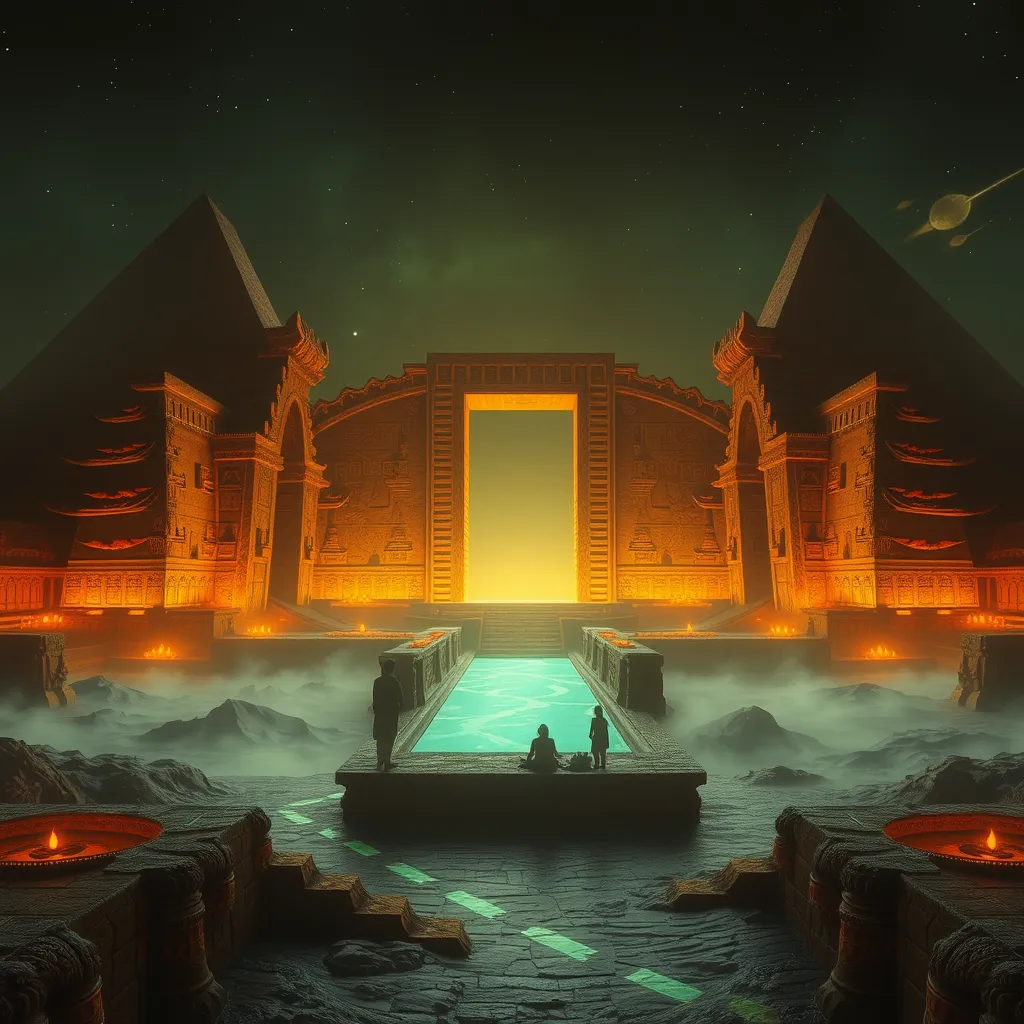The Duat: The Realm of Osiris
I. Introduction to the Duat
The Duat, often referred to as the Egyptian Underworld, is a significant realm in ancient Egyptian mythology that embodies the concept of the afterlife. It is a place where souls journey after death, facing judgment and the possibility of rebirth. This realm is intricately tied to Osiris, the god of the afterlife, who presides over the dead and oversees their journey through the Duat.
This article aims to explore the various facets of the Duat, its mythological origins, its geography, the journey of souls, the role of Osiris, the symbolism and art associated with it, and its influence on modern culture.
II. The Mythological Origins of the Duat
The Duat has its roots in ancient Egyptian creation myths, where Osiris plays a crucial role. According to these myths, Osiris was murdered by his brother Set, dismembered, and then resurrected by his wife Isis. This cycle of death and rebirth is fundamental to the understanding of the Duat, where the deceased undergo a transformation.
In ancient Egyptian culture, death was not seen as an end but rather as a necessary transition to a new life. The Duat served as a bridge between the living world and the afterlife, emphasizing the importance of proper burial rituals and offerings to ensure safe passage.
The Duat is often viewed in relation to other Egyptian realms, such as the physical world (the land of the living) and the Field of Reeds (a paradise-like afterlife). This triadic structure highlights the interconnectedness of life, death, and rebirth in Egyptian belief.
III. Geography and Structure of the Duat
The Duat is depicted as a vast, complex landscape filled with various features and locations that symbolize the challenges of the afterlife. It is often described as a dark and mysterious realm, filled with rivers, deserts, and mountains. Key geographical elements include:
- The Nile River, which symbolizes the life-giving force and serves as a pathway for the deceased.
- The Lake of Fire, representing purification and the trials that souls must face.
- The Fields of Iaru, a place of eternal peace for the worthy souls.
One of the most significant locations within the Duat is the Hall of Judgment, where the heart of the deceased is weighed against the feather of Ma’at, symbolizing truth and justice. This ceremony is pivotal in determining the soul’s fate in the afterlife.
IV. The Journey Through the Duat
The journey through the Duat is a perilous endeavor that every soul must undertake after death. This journey is fraught with challenges and obstacles, including:
- Confrontations with monstrous beings that guard the paths to the afterlife.
- Trials designed to test the soul’s worthiness and adherence to Ma’at.
- Darkness and chaos that threaten to consume the unworthy.
Various deities and guardians assist or impede the souls on their journey. These include Anubis, the god of embalming, who guides the deceased, and Thoth, the god of wisdom, who records the outcome of the heart’s weighing.
V. The Role of Osiris in the Duat
Osiris is the central figure in the Duat, serving as the judge of the dead. His role is crucial during the weighing of the heart ceremony, where the deceased’s heart is measured against the feather of Ma’at. This ceremony is emblematic of the ancient Egyptians’ beliefs in justice, morality, and the consequences of earthly actions.
The outcome of this judgment determines whether a soul can enter the Fields of Iaru or faces annihilation in the depths of the Duat. Osiris’ influence extends to the belief in resurrection; he embodies the hope for eternal life and the possibility of rebirth, reflecting the cycle of nature and agricultural fertility.
VI. Symbolism and Art in the Duat
The Duat is rich in symbolism, as depicted in ancient texts and artifacts. Artistic representations often illustrate the various stages of the soul’s journey, the beings encountered, and the rituals performed. Key aspects include:
- Hieroglyphics that convey complex narratives of the afterlife and the divine.
- Illustrations in tombs and temples that depict the Hall of Judgment and the weighing ceremony.
- Funerary rituals that emphasize the importance of preparing the body and soul for the afterlife.
The significance of tomb paintings cannot be overstated, as they served both as a guide and protection for the deceased in their journey through the Duat.
VII. The Duat in Modern Culture
The influence of the Duat extends beyond ancient mythology into contemporary literature and media. Its themes resonate with various cultural beliefs about the afterlife, prompting comparisons to concepts found in other civilizations.
Modern interpretations of the Duat can be seen in:
- Literature that explores themes of death and rebirth, often inspired by Egyptian mythology.
- Film and television that depict the afterlife through the lens of ancient Egyptian beliefs.
- Spiritual practices that draw upon the rich symbolism associated with Osiris and the Duat.
The enduring legacy of Osiris and the Duat continues to inspire and captivate, reminding us of humanity’s quest to understand life, death, and what lies beyond.
VIII. Conclusion
In summary, the Duat represents a complex and multifaceted aspect of ancient Egyptian mythology, intricately linked to the life and teachings of Osiris. Understanding the Duat provides valuable insights into the beliefs and practices surrounding death and the afterlife in ancient Egypt.
The significance of the Duat in the context of Egyptian mythology cannot be overstated, as it reflects the culture’s views on morality, resurrection, and the afterlife. As we explore these ancient beliefs, we find relevance in our own understanding of existence and the mysteries that lie beyond.
Ultimately, the Duat invites us to ponder the deeper questions of life and death, and its rich heritage continues to inspire modern spirituality and cultural expressions today.




